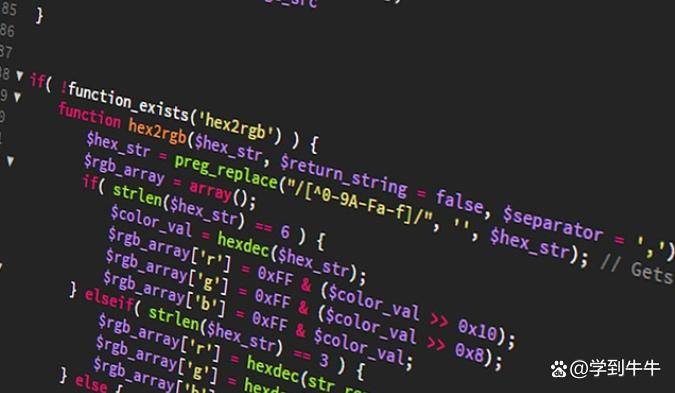今天我们将深入探讨C++性能优化的世界。在当今软件开发的浪潮中,高性能的代码是必不可少的。无论是开发桌面应用、移动应用,还是嵌入式系统,性能都是关键。
C++提供了丰富的数据结构,选择合适的数据结构是性能优化的第一步。例如,使用std::vector而不是std::list可以提高内存局部性,减少访问时间。合理选择数据结构不仅能够提高性能,还能简化代码逻辑。
#include <IOStream>
#include <vector>
#include <list>
#include <chrono>
int mAIn() {
const int size = 1000000;
// 使用vector
std::vector<int> vec;
for (int i = 0; i < size; ++i) {
vec.push_back(i);
}
// 使用list
std::list<int> lst;
for (int i = 0; i < size; ++i) {
lst.push_back(i);
}
// 测量vector遍历性能
auto start_vec_iter = std::chrono::high_resolution_clock::now();
for (auto it = vec.begin(); it != vec.end(); ++it) {
// 这里可以进行一些操作
int value = *it;
}
auto end_vec_iter = std::chrono::high_resolution_clock::now();
std::chrono::duration<double> duration_vec_iter = end_vec_iter - start_vec_iter;
std::cout << "Vector Iteration Time: " << duration_vec_iter.count() << " secondsn";
// 测量list遍历性能
auto start_lst_iter = std::chrono::high_resolution_clock::now();
for (auto it = lst.begin(); it != lst.end(); ++it) {
// 这里可以进行一些操作
int value = *it;
}
auto end_lst_iter = std::chrono::high_resolution_clock::now();
std::chrono::duration<double> duration_lst_iter = end_lst_iter - start_lst_iter;
std::cout << "List Iteration Time: " << duration_lst_iter.count() << " secondsn";
// 测量vector查找性能
auto start_vec_find = std::chrono::high_resolution_clock::now();
auto vec_iter = std::find(vec.begin(), vec.end(), size / 2);
auto end_vec_find = std::chrono::high_resolution_clock::now();
std::chrono::duration<double> duration_vec_find = end_vec_find - start_vec_find;
std::cout << "Vector Find Time: " << duration_vec_find.count() << " secondsn";
// 测量list查找性能
auto start_lst_find = std::chrono::high_resolution_clock::now();
auto lst_iter = std::find(lst.begin(), lst.end(), size / 2);
auto end_lst_find = std::chrono::high_resolution_clock::now();
std::chrono::duration<double> duration_lst_find = end_lst_find - start_lst_find;
std::cout << "List Find Time: " << duration_lst_find.count() << " secondsn";
return 0;
}
在这个例子中,我们使用std::vector和std::list分别存储一百万个整数,并测量了它们在遍历和查找元素方面的性能。在遍历时,std::vector表现更好,而在查找时,std::list可能表现更好,因为它在插入和删除元素时更高效。这就展示了合理选择数据结构的重要性,以便在特定的使用场景中获得最佳性能。
动态内存分配和释放是性能损耗的主要来源之一。尽量避免频繁的new和delete操作,可以考虑使用对象池、内存池等技术来管理内存,减少内存分配的开销。
#include <iostream>
#include <vector>
// 定义对象池
template <typename T, size_t PoolSize = 100>
class ObjectPool {
public:
ObjectPool() {
for (size_t i = 0; i < PoolSize; ++i) {
pool_.push_back(new T);
}
}
~ObjectPool() {
for (T* obj : pool_) {
delete obj;
}
}
// 从对象池中获取对象
T* acquire() {
if (pool_.empty()) {
// 如果对象池为空,动态分配一个新对象
return new T;
} else {
// 从对象池中取出一个对象
T* obj = pool_.back();
pool_.pop_back();
return obj;
}
}
// 将对象归还到对象池
void release(T* obj) {
pool_.push_back(obj);
}
private:
std::vector<T*> pool_;
};
// 示例类
class MyClass {
public:
MyClass() {
std::cout << "MyClass Constructor" << std::endl;
}
~MyClass() {
std::cout << "MyClass Destructor" << std::endl;
}
// 其他成员函数...
};
int main() {
// 使用对象池管理MyClass对象
ObjectPool<MyClass> myClassPool;
// 从对象池中获取对象
MyClass* obj1 = myClassPool.acquire();
MyClass* obj2 = myClassPool.acquire();
// 使用对象...
// 归还对象到对象池
myClassPool.release(obj1);
myClassPool.release(obj2);
return 0;
}
在这个例子中,ObjectPool是一个简单的模板类,用于管理特定类型的对象。它在构造函数中预先分配了一定数量的对象,并在需要时从中获取对象,使用完毕后再将对象归还给对象池。这样可以减少频繁的动态内存分配和释放,提高性能。在实际应用中,可以根据具体需求调整对象池的大小和管理策略。
选择更高效的算法对性能优化至关重要。了解各种排序、查找算法的时间复杂度,并根据具体场景选择最适合的算法。在处理大规模数据时,使用并行算法也是一个有效的手段。
函数调用会引入一定的开销,特别是在循环中频繁调用的函数。可以使用内联函数、避免不必要的函数调用,以减少开销。同时,注意避免过度的递归调用,因为递归可能导致栈溢出和性能下降。
#include <iostream>
#include <chrono>
// 定义内联函数
inline int add(int a, int b) {
return a + b;
}
// 非内联函数
int multiply(int a, int b) {
return a * b;
}
int main() {
const int size = 1000000;
int result = 0;
auto start = std::chrono::high_resolution_clock::now();
// 在循环中频繁调用内联函数
for (int i = 0; i < size; ++i) {
result += add(i, i);
}
// 在循环中频繁调用非内联函数
for (int i = 0; i < size; ++i) {
result += multiply(i, i);
}
auto end = std::chrono::high_resolution_clock::now();
std::chrono::duration<double> duration = end - start;
std::cout << "Total Time: " << duration.count() << " secondsn";
return 0;
}
在这个例子中,add函数被声明为内联函数,而multiply函数没有被声明为内联函数。在循环中频繁调用add时,编译器会尝试将其内联展开,从而减少函数调用的开销。而对于multiply函数,由于没有声明为内联,它将被正常调用,引入一定的函数调用开销。
在多核时代,充分利用多线程和并发编程是提高性能的重要手段。C++11及以后的标准提供了丰富的多线程支持,合理设计并发结构可以使程序更好地利用系统资源,提高运行效率。
#include <iostream>
#include <vector>
#include <thread>
#include <numeric>
// 并发计算数组元素的总和
void parallel_accumulate(const std::vector<int>& data, size_t start, size_t end, int& result) {
result = std::accumulate(data.begin() + start, data.begin() + end, 0);
}
int main() {
const size_t size = 1000000;
const size_t num_threads = 4;
// 初始化数据
std::vector<int> data(size, 1);
// 存储每个线程的部分结果
std::vector<int> partial_results(num_threads, 0);
auto start = std::chrono::high_resolution_clock::now();
// 划分数据并启动多线程计算
std::vector<std::thread> threads;
for (size_t i = 0; i < num_threads; ++i) {
size_t start_index = i * (size / num_threads);
size_t end_index = (i + 1) * (size / num_threads);
threads.emplace_back(parallel_accumulate, std::ref(data), start_index, end_index, std::ref(partial_results[i]));
}
// 等待所有线程完成
for (auto& thread : threads) {
thread.join();
}
// 计算所有部分结果的总和
int final_result = std::accumulate(partial_results.begin(), partial_results.end(), 0);
auto end = std::chrono::high_resolution_clock::now();
std::chrono::duration<double> duration = end - start;
std::cout << "Parallel Accumulate Time: " << duration.count() << " secondsn";
std::cout << "Final Result: " << final_result << std::endl;
return 0;
}
现代的C++编译器提供了许多优化选项,通过启用这些选项,可以让编译器更好地优化代码。例如,使用-O2、-O3等选项开启不同级别的优化,或者使用特定的目标架构选项。
在一些性能敏感的场景,可以考虑使用内联汇编来优化代码。内联汇编可以直接嵌入到C++代码中,实现对底层硬件的直接控制,从而提高代码执行效率。
性能分析工具是优化的得力助手,可以帮助开发者找到代码中的瓶颈和性能瓶颈。常用的性能分析工具有gprof、Valgrind等,它们能够帮助你全面了解程序的性能状况,并找到需要优化的地方。
希望以上这些建议能够帮助大家更好地理解和应用C++性能优化的技巧。在代码的世界里,不断追求性能的极致,才能让我们的程序在飞速前行的道路上越走越远。









